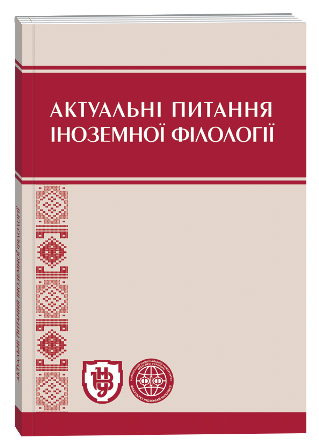AUTHORIAL COMMENTARY ON A LITERARY TEXT AS A HYPERTEXTUAL STRUCTURE
DOI:
https://doi.org/10.32782/2410-0927-2024-20-1Keywords:
authorial commentary, literary text, hypertext, intertextuality, textual analysisAbstract
The study examines the phenomenon of authorial commentary within literary texts as a component of hypertextual structure, aiming to elucidate its role and functions in shaping reader perception and interpretation. Given the contemporary literary analysis's focus on intertextuality, this research contributes to a deeper understanding of how authorial commentaries interact with readers and enrich the textual experience. Contemporary research in the realm of intertextuality focuses on how authorial commentaries influence the perception and interpretation of literary texts. Some indicate that authorial commentaries may assist readers in better understanding and assimilating content, serving the function of orientation and clarification of complex aspects of the text, while other studies concentrate on empirical methods, such as psycholinguistic experiments, to determine the impact of authorial commentaries on readers. The article emphasizes the importance of authorial commentary in facilitating communication between authors and readers, expanding our comprehension of literary works as intricate information systems. By analyzing various forms of authorial commentary, including explicit and implicit manifestations, the study describes the mechanisms through which authors engage with their audience and convey nuanced perspectives within their texts. Through linguistic analysis and textual interpretation, the research identifies the communicative functions of authorial commentary, shedding light on its role in guiding reader comprehension and eliciting emotional responses. An author's commentary is a certain interpretation of a literary text by an author, in particular, words, fragments, or storylines of his or her work. The text of the author's commentary is built by the logical unfolding of information, some of which is additional to the understanding of a particular text fragment, but not superfluous for the reader to catch the main informative line that can affect the semantic structure of the main literary text. Perspectives include further investigation into the interaction between authorial commentaries and readers, consideration of psycholinguistic aspects, and analysis of the role of commentaries in different genres and literary periods.
References
Barnes J. A History of the World in 10 ½ Chapters. London. Vintage Books, 2009. 311 p.
Derrida J. Of Grammatology. Johns Hopkins University Press. 1997. 355 p.
Eco U. Interpretation and Overinterpretation: World, History, Texts. Cambridge University Press. 1992. 162 p.
Evans E. P. The Criminal Prosecution and Capital Punishment of Animals. London. 1996. 384 p.
Harris Z. S. Discourse Analysis. Language. Vol. 28. (1). 1952. P. 1–30.
Hawthorn J. A. Concise Glossary of Contemporary Literary Theory. London. 1992. 210 p.
Irwin W. Against Intertextuality. Philosophy and Literature. Vol. 28. (2). 2004. P. 227–242.
Kristeva J. Desire in Language: A Semiotic Approach to Literature and Art. New York: Columbia University. Press. 1980. 305 p.
Maugham W. S. The Razor’s edge. London: Vintage Books. 2004. 320 p.
Ott B., Cameron W. Intertextuality: Interpretive Practice and Textual Strategy. Critical Studies in Media Communication. Vol. 17. (4). 2000. P. 429–446.
Thackeray W. M. Vanity Fair. Random House. 2009. 395 p.







